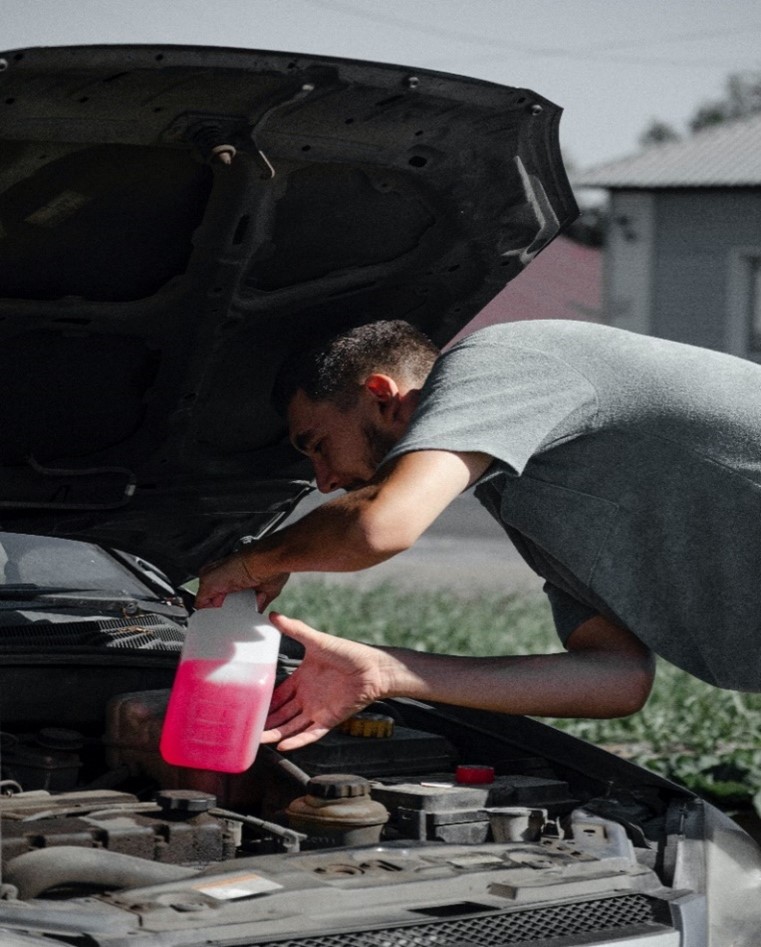Engine coolant is a liquid that helps maintain the temperature of the fluids in your engine. It performs the duties of preventing the fluids from freezing in chilly weather and stops them from boiling in higher temperatures. Engine coolants are mostly associated with antifreeze which seems fair since the only major difference between these two is distilled water. Antifreeze becomes engine coolant when it’s mixed with distilled water.
Engine coolant plays a vital role in keeping your car’s engine healthy and improving performance. You must change your coolant after a certain time, preferably after every 30,000 miles. If you feel the engine is overheated or the coolant leaking under the hood, it might be time to replace your old coolant with a new one.
Toxic Elements in the Coolant
Coolants comprise compounds that help it acclimate to extreme weather conditions. The toxic compounds are only friendly for your car but should be handled with utmost care and precautions when it comes to human contact. The two toxic compounds commonly found in engine coolant are as follows:
Ethylene Glycol
Your car engine might love ethylene, but it poses serious health threats to you and other habitats. You must be extra careful while dealing with this chemical that actually has a sweet taste and smell. It should always be kept as far away as possible from little kids and pets as they can easily misunderstand this with their favorite liquid snack due to its smell and taste.
Propylene Glycol
Propylene glycol is a bit less toxic than ethylene used in coolants but still harmful enough to cause health problems. Children and pets should not be near this fluid. So you should be careful even after you dispose of it and make sure the acid is dumped at a place where human contact cannot be made. Ingested in large quantities can have the same harmful impacts as ethylene glycol.
It is imperative to obtain every precautionary measure while disposing of the coolant. You must have the following gear and wear them before making any move concerning the engine coolant.
– Masks
– Safety Gloves
– Goggles
The reason why this fluid should not be tread lightly is that if it gets ingested, it can poison your body and damage vital organs, including the lungs, liver, and kidneys. The poisonous effect can even lead to congenital disabilities and, in the worst cases, death if left untreated. Due to its dangers to humans, engine coolants now use substitute variants to minimize the risk factors. In order to prevent any injuries, here are a few safety measures for you to follow.
Safely disposing of Engine Coolant
First, you need a sizable container to collect the coolant without spilling it. Make sure the engine coolant does not make any direct contact with your skin. Once you manage to collect the coolant, seal the container properly. It is unsafe to drain or dump the used engine coolant on the ground or backyard of the house. Take it to the disposal facility or a service station, and they will take care of it.
Why is Draining or Dumping not safe?
Draining can cause problems as the compounds in the coolant are hazardous to the environment. Draining is not a safe option since the pets, and other stray species can consume them from the drainage, which can be life-threatening for them.
Don’t put yourself at risk if you are Unsure
The safest option would be to take your car to a service station or disposal center, where trained professionals will handle the matter. It will also free you from the burden of carrying the disposed engine coolant all the way from your residence to the nearby station. They follow the standard parameters depending on the type of engine coolant. They might also have facilities for recycling it.
If you are looking for an engine coolant or are unsure about the best coolant for your car, American MFG has the best products with complete details and an instruction manual to decide the best product for your car.

